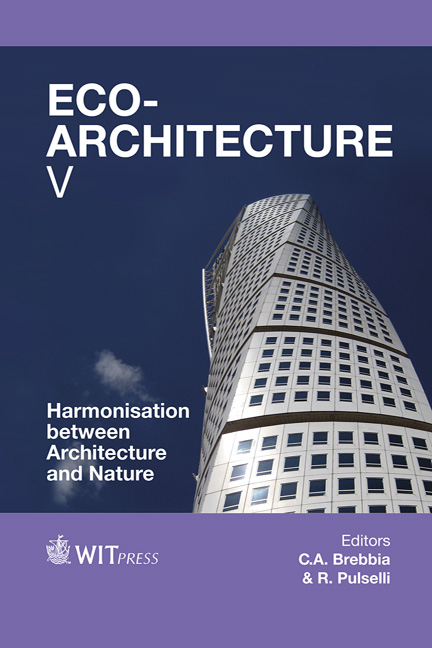Incorporation Of Bioclimatic Conditions In Architectural Projects: A Case Study Of The Solar Hemicycle Building, Madrid, Spain
Price
Free (open access)
Transaction
Volume
142
Pages
9
Page Range
3 - 11
Published
2014
Size
747 kb
Paper DOI
10.2495/ARC140011
Copyright
WIT Press
Author(s)
E. Vazquez, M. Brandão, S. Rola, L. Alves, M. Freitas, L. Pinguelli Rosa
Abstract
The concept of planning more sustainable cities is a global concern, facing current prominent environmental chaos. The construction industry is, among others, responsible for the destruction of the environment, due to the extraction of raw material for the manufacture of construction elements, debris generation during the process of construction and high energy consumption throughout the life cycle of the buildings. Thus, this paper aims to propose a possibility of low environmental impact construction, proposing the incorporation of bioclimatic conditions in architectural works, minimizing environmental impacts. This research intends to promote the increase of buildings with reduced environmental impact and healthier cities, by employing systems for natural lighting and natural ventilation, as simple and cheap solutions, often seen only by formal feature (project design), without the use of high-cost technologies and complexity. A case study was conducted regarding the Spanish building Solar Hemicycle, due to its contemporary bioclimatic design that meets the current needs of society. The case study based on the Solar Hemicycle demonstrates the good performance of bioclimatic architecture, illustrating that it is possible to combine architectural practice (incorporating passive systems in architectural projects), to the environment, towards environmental sustainability without high investments in technology. The results of the study provide architecture and civil engineering professionals access to eco-efficient solutions for application in future projects, and thus contribute to the appearance of buildings that provide a higher quality of life for people and harmony with the environment.
Keywords
bioclimatic architecture, sustainable building, passive systems, Solar Hemicycle (Spain)





